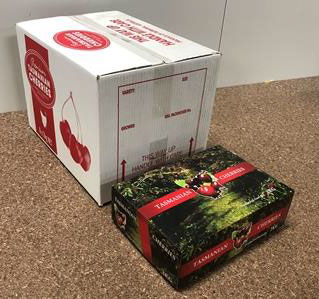The focus on quality over quantity when exporting into Asian markets has been prevalent for some years.
This will almost certainly continue as commodity prices for cherries continue to decrease.
Recommendations (cont from last issue)
With several advantages over international competitors, many improvements to existing systems can be made to develop this emphasis on presenting the best cherries on the market.
In all likelihood these premium sales opportunities, including the lucrative Lunar New Year gift market, represent the best chance for Tasmanian cherry producers to remain financially viable. Key recommendations from this report are:
• The Asian export markets need to remain a key focus. The Chilean crop is predicted to continue to expand and as such, it has never been more critical to produce the highest quality fruit.
• Australian producers should continue to focus on air freight rather than exploring sea shipping. The ability of Australian producers to air freight fruit quickly and efficiently to China gives a distinct advantage over Chilean producers who will continue to rely on sea shipping due to the financial limitations of air freighting.
• Reduce the amount of time a piece of fruit is handled. This will reduce bruising and improve final quality, although this must be balanced with maintaining transport efficiency and logistical practicality.
• Cherries must be introduced to the cold chain as soon as possible. Design of harvest systems should place emphasis on reducing the time between picking and hydrocooling with inefficiency in this area causing irreversible reduction of shelf life.
(cont next issue)
See this article in Tree Fruit Oct 2022






















